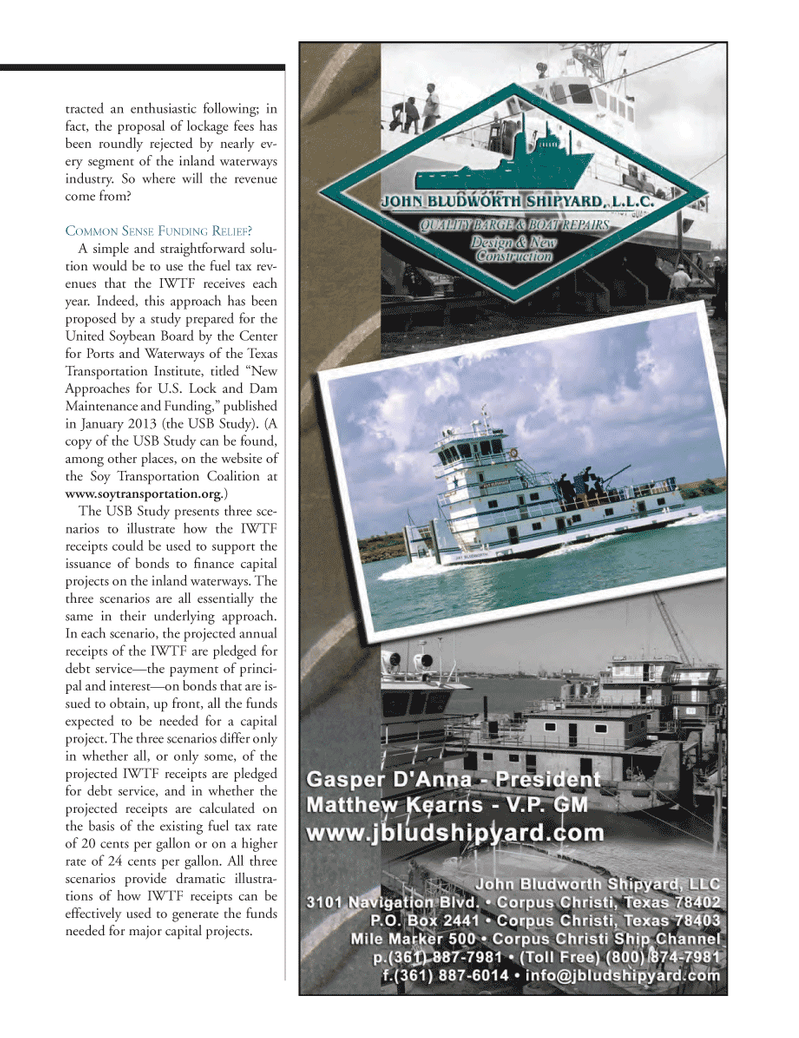
Page 41: of Marine News Magazine (November 2014)
Workboat Annual
Read this page in Pdf, Flash or Html5 edition of November 2014 Marine News Magazine
tracted an enthusiastic following; in fact, the proposal of lockage fees has been roundly rejected by nearly ev- ery segment of the inland waterways industry. So where will the revenue come from?
COMMON SENSE FUNDING RELIEF?
A simple and straightforward solu- tion would be to use the fuel tax rev- enues that the IWTF receives each year. Indeed, this approach has been proposed by a study prepared for the
United Soybean Board by the Center for Ports and Waterways of the Texas
Transportation Institute, titled “New
Approaches for U.S. Lock and Dam
Maintenance and Funding,” published in January 2013 (the USB Study). (A copy of the USB Study can be found, among other places, on the website of the Soy Transportation Coalition at www.soytransportation.org.)
The USB Study presents three sce- narios to illustrate how the IWTF receipts could be used to support the issuance of bonds to fi nance capital projects on the inland waterways. The three scenarios are all essentially the same in their underlying approach.
In each scenario, the projected annual receipts of the IWTF are pledged for debt service—the payment of princi- pal and interest—on bonds that are is- sued to obtain, up front, all the funds expected to be needed for a capital project. The three scenarios differ only in whether all, or only some, of the projected IWTF receipts are pledged for debt service, and in whether the projected receipts are calculated on the basis of the existing fuel tax rate of 20 cents per gallon or on a higher rate of 24 cents per gallon. All three scenarios provide dramatic illustra- tions of how IWTF receipts can be effectively used to generate the funds needed for major capital projects.
MN Nov14 Layout 32-49.indd 41 10/24/2014 2:46:16 PM

 40
40

 42
42
